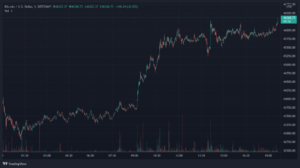
Before diving into everything you need to know about CBN isolate, it’s important to first understand what cannabinol (CBN) is and how it differs from CBD and CBG.
Cannabis that has been improperly stored and exposed to air or ultraviolet light for an extended time will naturally begin to oxidize. The degraded THC then converts to CBN.
A study conducted by the United Nations Office on Drugs and Crime in 1999 testing the loss of THC potency in cannabis over time showed that over four years, the THC levels dropped to half its content, converting to CBN.
The study found that in the first two years of exposure to oxygen and light, the THC to CBN conversion rate was faster than in the final two years.
From the study, the UNODC found that “A relationship between the concentration ratio of CBN to THC and the storage time was developed and could serve as a guide in determining the approximate age of a given marijuana sample stored at room temperature.”
As THC converts to CBN, a variety of other cannabinoids and terpenoids accompany the CBN.
That’s why many choose to extract CBN in its purest form to be used separately for its own unique set of benefits or combined with other cannabinoids in a more controlled manner.
This extract of pure CBN is called CBN isolate.
CBN isolate is the most commonly available product of CBN concentrate.
In the extraction, CBN is isolated from all other compounds of the cannabis plant, including:
- Other flavonoids
- Cannabinoids
- Terpenoids
This extraction leaves a completely odorless and flavorless CBN isolate that is over 99% pure CBN.







